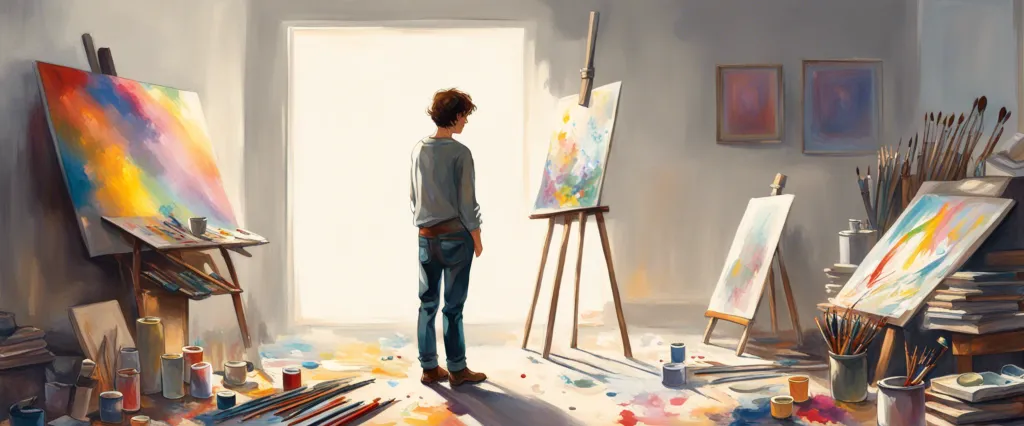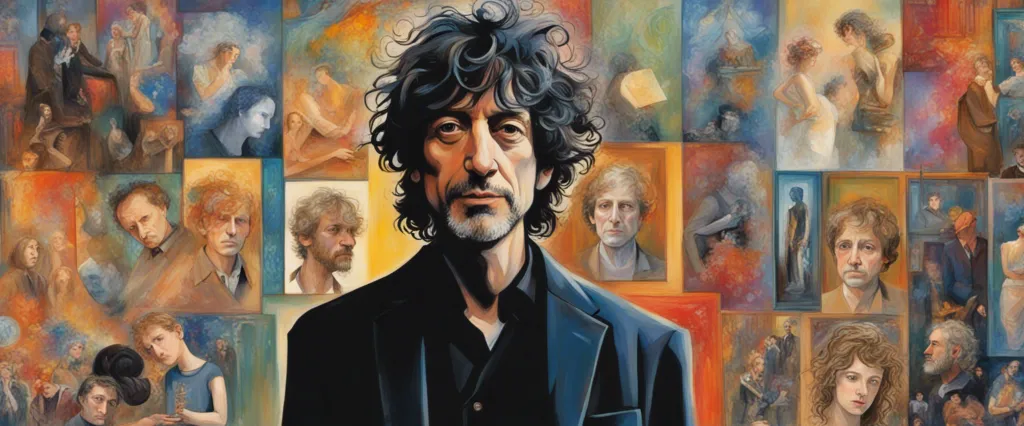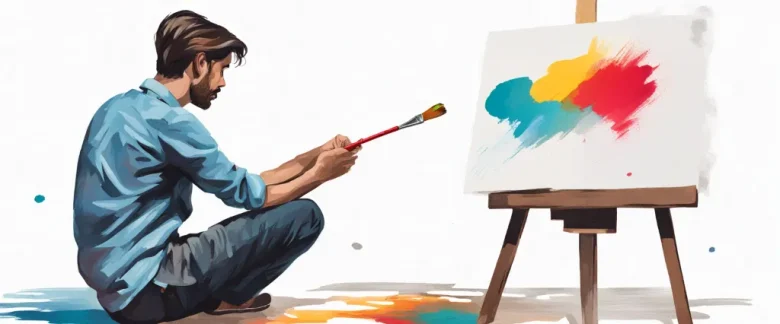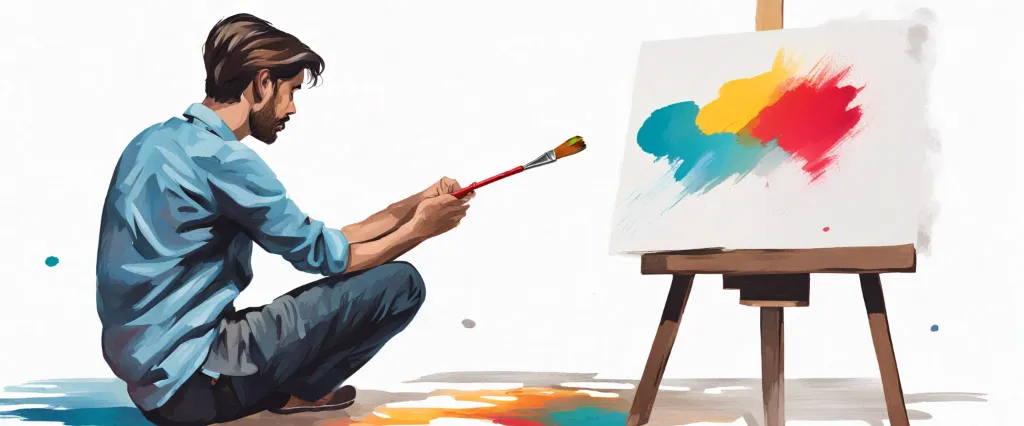In “Art Matters,” acclaimed author Neil Gaiman explores the profound impact of art and creativity in shaping our world, our minds, and our dreams. This collection of essays, speeches, and anecdotes offers a delightful glimpse into Gaiman’s fervent belief in the transformative power of art. As an award-winning storyteller and master of the fantastical, Gaiman captivates readers with his distinct imagination and engaging prose. Having authored works spanning numerous genres, including novels like “American Gods” and “Coraline,” Gaiman continues to mesmerize audiences worldwide with his enchanting narratives. Now, in “Art Matters,” he eloquently reminds us all of the significance of art and its ability to ignite our souls, challenge us, and change the world.
Chapter 1: Why Our Future Depends on Libraries, Reading, and Daydreaming
Chapter 1 of “Art Matters” by Neil Gaiman, titled “Why Our Future Depends on Libraries, Reading, and Daydreaming,” is a passionate argument for the significance of art and its essential role in society. Gaiman, a renowned author, emphasizes the importance of nurturing creativity and imagination in individuals of all ages.
The chapter begins by highlighting the impact of libraries, which he describes as vital institutions that introduce people to new ideas and perspectives. Gaiman shares childhood memories of discovering books that transported him to different worlds and made him dream. He emphasizes that libraries are essential in providing access to knowledge and fostering a love for reading, emphasizing that being able to read opens doors to limitless possibilities.
Gaiman goes on to assert that art, whether in the form of literature, film, music, or visual mediums, helps individuals develop empathy and understand the experiences of others. Art has the power to challenge societal norms, spark creativity, and inspire change. Gaiman believes that art is not limited to the professionals but is a tool available to everyone to express themselves and share their unique perspectives with the world.
He emphasizes that art matters because it allows people to escape and imagine possibilities beyond their immediate realities. Daydreaming is a powerful tool that encourages individuals to explore their potential and envision a better future. Gaiman argues that the world needs dreamers and thinkers who can challenge the status quo and shape a brighter society through their creative endeavors.
Overall, Chapter 1 of “Art Matters” celebrates the profound influence of libraries, reading, and daydreaming in shaping individuals and inspiring positive change in the world. Through this chapter, Gaiman passionately defends the importance of art and encourages readers to embrace their creativity and appreciate the impact it can have on both personal and societal levels.
Chapter 2: How to Find Your Voice
Chapter 2 of “Art Matters” by Neil Gaiman, titled “How to Find Your Voice,” delves into the idea of creative expression and finding one’s unique voice in the world of art. Gaiman emphasizes the importance of authenticity and encourages readers to be individualistic in their artistic journeys.
Gaiman begins the chapter by stating that everyone has their own voice, which may take time to discover and refine. He urges artists not to emulate others but to embrace their quirks, imperfections, and personal experiences that make them unique. By embracing one’s true self, artists can create work that resonates deeply with others.
The author recounts his own journey of finding his voice in writing and shares moments when he learned to be true to himself and his artistic vision. Gaiman believes that art should reflect its creator’s truths and experiences, and that this honesty is what makes it captivating and meaningful.
Furthermore, Gaiman highlights the importance of perseverance and practice in developing one’s artistic voice. He acknowledges that finding one’s voice can be a difficult and ongoing process, but encourages readers to keep creating and experimenting without fear of failure. Through trial and error, artists can refine their skills, discover new techniques, and ultimately uncover their unique artistic identity.
In conclusion, “How to Find Your Voice” emphasizes the significance of being authentic and true to oneself in the world of art. Gaiman inspires readers to confidently express their own experiences and perspectives, ultimately finding their distinct voices and making a lasting impact with their creations.
Chapter 3: The Importance of Making Good Art
Chapter 3 of “Art Matters” by Neil Gaiman, titled “The Importance of Making Good Art,” emphasizes the significance of creating art with meaning and purpose. Gaiman discusses how the act of making art can bring joy and fulfillment to both the artist and the audience.
The chapter begins with Gaiman sharing a personal anecdote about a young girl who is passionate about writing. Despite facing discouragement from others, she perseveres and continues to create stories that ignite her imagination. Gaiman uses this example to highlight the resilience and determination necessary for artists to overcome obstacles and pursue their artistic endeavors.
Gaiman asserts that art has the power to connect people on a deeper level, transcending language and cultural barriers. He argues that good art should evoke emotions, challenge societal norms, and provoke thought. By creating art that resonates with audiences, artists have the potential to inspire change and impact the world.
Moreover, Gaiman emphasizes the significance of artists staying true to themselves and their unique creative vision. He encourages creators to resist the temptation of creating art solely for the purpose of pleasing others or achieving commercial success. Instead, he suggests that artists should focus on expressing their authentic voice and exploring their own imaginations.
In conclusion, “The Importance of Making Good Art” underscores the necessity of creating art that is meaningful, thought-provoking, and authentic. Gaiman implores artists to persist in their creative pursuits, as art has the power to bring joy, inspire change, and forge connections between individuals.
Chapter 4: The Art of Asking Questions

Chapter 4 of Art Matters by Neil Gaiman, titled “The Art of Asking Questions,” delves into the importance of curiosity and questioning in the realm of art. Gaiman highlights the significance of asking questions as a means of exploring and understanding various forms of artistic expression.
The chapter begins with a personal anecdote about Gaiman’s daughter, who constantly questioned everything around her. Gaiman emphasizes that curiosity, particularly through questioning, fuels creativity and engages the mind. He emphasizes the necessity of nurturing and embracing this curiosity, whether one is an artist or not.
Gaiman suggests that questioning is the key to unlocking the transformative power of art. He emphasizes that being curious and asking questions is what allows artists to connect with their audiences, provoke thought, and inspire change. By questioning the world around them, artists can take ordinary things and spin them into something extraordinary.
Gaiman also discusses the idea that questioning helps us to challenge societal norms and assumptions. By asking the right questions, artists can prompt others to reevaluate their perspectives and explore alternative possibilities. Gaiman emphasizes that art should not merely conform to existing expectations but should rather challenge and provoke people to think differently.
In conclusion, Chapter 4 of Art Matters by Neil Gaiman underscores the significance of asking questions in the realm of art. By embracing curiosity and questioning, artists can unlock their creative potential, engage their audience, and promote critical thinking and change. Gaiman encourages readers to nurture their curiosity, as it is through asking questions that artists and individuals can truly make a difference in the world.
Chapter 5: The Value of Imagination
Chapter 5 of “Art Matters” by Neil Gaiman, titled “The Value of Imagination,” explores the significant role of imagination in both art and life. Gaiman emphasizes that imagination is not a frivolous endeavor but a powerful tool that enables humans to create, dream, and ultimately reshape the world.
Gaiman begins by highlighting the incredible versatility of imagination, asserting that it allows people to conceive what is nonexistent and bring it into existence. He believes that imagination is vital for progress, as every scientific, technological, or creative achievement starts with a seemingly impossible idea formed in someone’s imagination.
The author argues that imagination is not only important for artists but for everyone. It helps individuals envision a better world, identify problems, and develop solutions. Gaiman cautions against dismissing imagination as a mere distraction or entertainment, as its potential impact on society is awe-inspiring.
He further explores the link between imagination and empathy. Gaiman posits that imagination enables individuals to step into someone else’s shoes, comprehend their experiences, and cultivate a greater understanding and compassion for others. This empathy, which is fostered by imagination, ultimately strengthens social connections and fosters a more compassionate and harmonious society.
Gaiman concludes the chapter by asserting that imagination is a skill that should be cultivated and cherished. He encourages his readers to liberate their imaginations and not be bound by limitations or conventional wisdom. He emphasizes that the world needs imaginative and visionary individuals who dare to imagine and strive to transform their dreams into reality.
In summary, Chapter 5 of “Art Matters” emphasizes the immense value of imagination. Whether applied to art or everyday life, imagination has the power to create, connect, and change the world. Gaiman’s message resonates with a call to nurture our individual creativity and use our imagination to envision and build a better future.
Chapter 6: The Art of Making Mistakes
Chapter 6: The Art of Making Mistakes, from the book “Art Matters” by Neil Gaiman, delves into the importance and value of making mistakes in the creative process. Gaiman begins by highlighting how our failures and mistakes often hold more lessons and growth opportunities than our successes.
He emphasizes the notion that being creative inherently carries the risk of failure, as creativity involves taking risks and trying new things. Gaiman recalls numerous personal experiences where his mistakes led him to breakthroughs and new artistic directions. He believes that making mistakes is an integral part of the creative journey and that fear of failure should not hinder one’s artistic pursuits.
Gaiman also explores how society has often stigmatized mistakes and conditioned individuals to strive for perfection, leading to a fear of failure and stifled creativity. He argues against this mindset, stating that it limits artistic expression and innovation. Through anecdotes and examples from various artists, Gaiman illustrates how embracing mistakes can fuel creativity and push boundaries.
The chapter culminates in Gaiman’s message to aspiring artists: mistakes are essential in the pursuit of artistic growth, learning, and evolving as a creator. He encourages readers to embrace their missteps, learn from them, and use them as stepping stones towards better art. Gaiman reinforces the notion that it is better to create imperfectly than to not create at all.
In summary, Chapter 6 of “Art Matters” celebrates the art of making mistakes as a catalyst for growth and creative exploration. Gaiman emphasizes the importance of fearlessly embracing and learning from failures, rejecting societal pressures for perfection, and allowing oneself to take risks, ultimately evolving as an artist.
Chapter 7: How to Make Good Art
Chapter 7 of “Art Matters” by Neil Gaiman, titled “How to Make Good Art,” explores the concept of artistic creation and the importance of persisting through challenges in order to create meaningful work. Gaiman begins by acknowledging that creating art can be a difficult and demanding process, often filled with doubts and uncertainties. However, he emphasizes the significance of embracing these challenges and pursuing one’s artistic passions.
Gaiman imparts valuable advice to aspiring artists, encouraging them to push past fear and self-doubt. He believes that it is essential for artists to trust their instincts and stay true to their unique vision. The author reminds readers that making art requires devotion and dedication, and emphasizes the importance of establishing a routine and setting aside time regularly for creative endeavors.
While Gaiman acknowledges that creativity can sometimes feel like an arduous task, he stresses the importance of persistence. He believes that perseverance is essential in the face of setbacks and discouragement, as it allows artists to evolve and grow. Gaiman encourages artists to be open to failure and learn from their mistakes, as it is through these experiences that true growth and improvement are achieved.
Overall, Chapter 7 of “Art Matters” serves as a motivational guide for artists to overcome their fears and doubts, urging them to embrace challenges and persist in creating their work. Gaiman’s message fosters a sense of resilience and encourages artists to trust their artistic instincts, devote themselves to their craft, and continue to create meaningful art that can resonate with others.

Chapter 8: Why We Need Art in Our Lives
Chapter 8 of “Art Matters” by Neil Gaiman is titled “Why We Need Art in Our Lives.” In this chapter, Gaiman passionately emphasizes the essential role of art in human life and society.
Gaiman starts by exploring how art can make our everyday lives more meaningful. He explains that art helps us to escape from the mundane and find joy and solace in difficult times. Whether it is through literature, music, or visual arts, art offers an avenue to explore emotions, feelings, and stories that resonate with our own experiences.
According to Gaiman, art is also an important catalyst for social change. He argues that art has the power to challenge conventions, question authority, and provoke thought. Artists can examine the world around them, highlight injustices, and inspire others to take action. Art can be a potent tool for building empathy, fostering conversation, and promoting understanding among diverse communities.
In addition to its societal impact, Gaiman suggests that art is essential for personal growth and exploration. Consuming and creating art enables individuals to develop their imagination and creativity. It allows them to see the world from different perspectives and encourages critical thinking. Artistic expression empowers individuals to find their own voice and become active participants in shaping society.
In conclusion, Gaiman argues that art is fundamental to humanity’s well-being. It brings beauty, meaning, and purpose to our lives. Art has the potential to enlighten, inform, and inspire us. It fosters empathy, drives change, and shapes our collective identity. Gaiman firmly believes that embracing art is not a luxury but a necessity for a fulfilling and vibrant existence.
After Reading
In conclusion, “Art Matters” by Neil Gaiman is a compelling manifesto that emphasizes the significance of art in society. Through his passionate and thought-provoking essays, Gaiman encourages readers to embrace their creativity, challenge societal norms, and use art as a tool for change. He reminds us that art matters because it has the ability to inspire, connect, and empower individuals and communities. Gaiman’s words serve as a rallying cry to prioritize and celebrate the transformative power of art, encouraging readers to make their own art, support artists, and champion the importance of artistic expression in our lives. Overall, “Art Matters” is a powerful reminder of the enduring value and impact of art in fostering imagination, empathy, and a better world.
1. “Steal Like an Artist” by Austin Kleon: This book, like “Art Matters,” offers inspiration and advice for aspiring artists. Kleon emphasizes the importance of embracing creativity, finding your own voice, and cultivating a habit of creativity in everyday life.
2. “Big Magic: Creative Living Beyond Fear” by Elizabeth Gilbert: Gilbert, the author of “Eat, Pray, Love,” explores the challenges and joys of living a creative life in this book. Through personal anecdotes and practical tips, she encourages readers to overcome their fears and embrace their creative passions.
3. “The War of Art: Break Through the Blocks and Win Your Inner Creative Battles” by Steven Pressfield: In this motivational book, Pressfield delves into the concept of resistance that often holds artists back from pursuing their creative endeavors. He offers practical strategies to overcome self-doubt, procrastination, and other obstacles that hinder creativity.
4. Bird by Bird: Some Instructions on Writing and Life” by Anne Lamott: While focused on writing, Lamott’s book offers valuable insights into the creative process. With a mix of humor and wisdom, she explores the challenges faced by artists, shares practical advice, and encourages readers to find their unique artistic voice.
5. On Writing: A Memoir of the Craft” by Stephen King: In this memoir, renowned author Stephen King reflects on his journey as a writer and shares valuable insights into the art and craft of storytelling. Part autobiography, part guide to writing, this book offers inspiration, practical advice, and an intimate look into the writing process.




